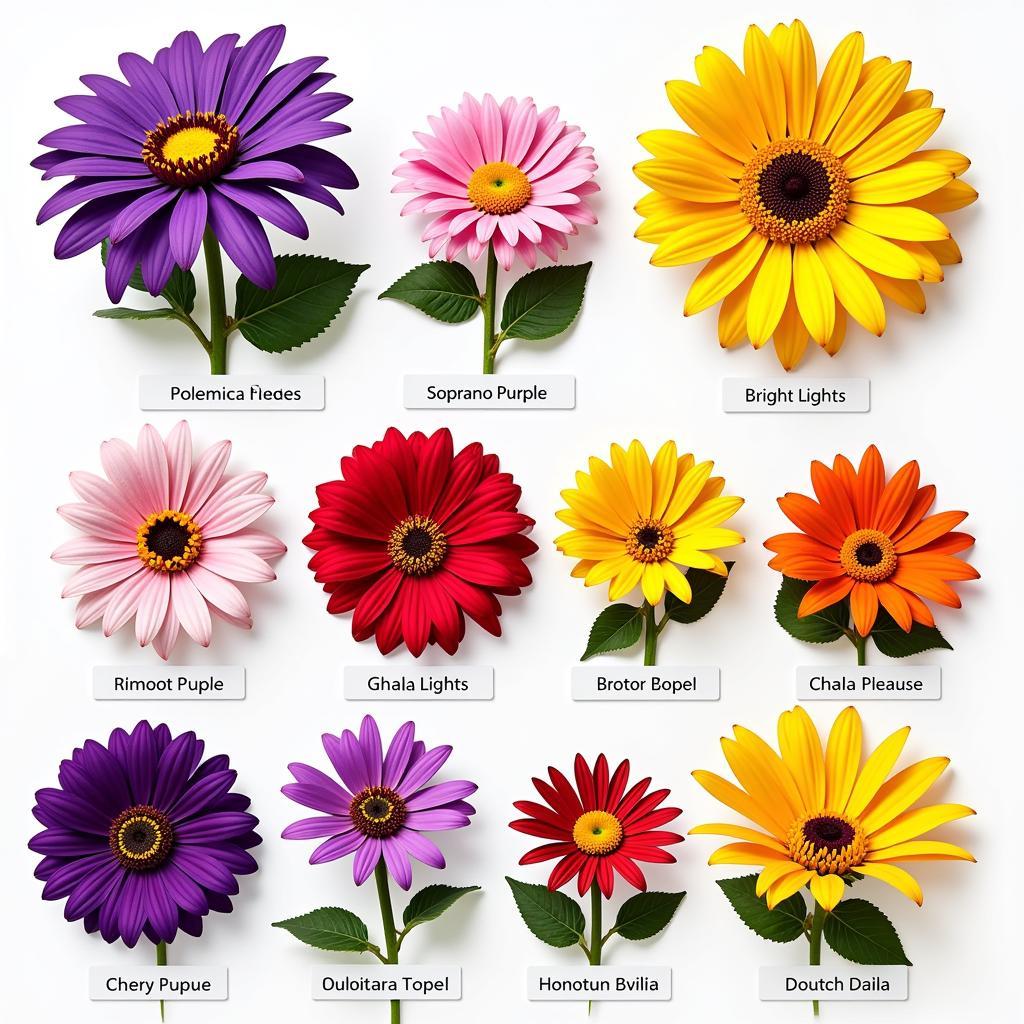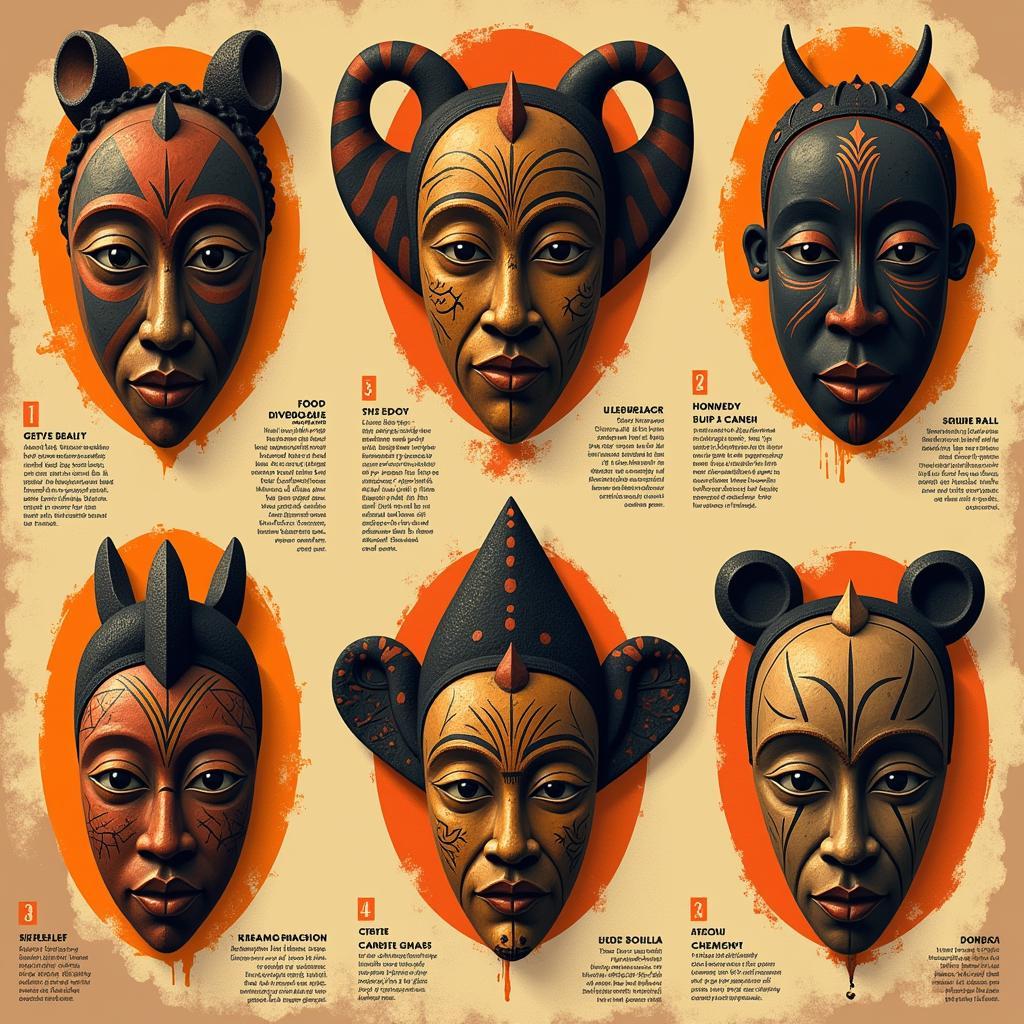The Captivating World of African Art Faces
African Art Faces are more than just aesthetic representations; they are windows into the soul of a diverse and vibrant continent. From the intricate masks of West Africa to the expressive sculptures of East Africa, these faces tell stories of history, spirituality, and cultural identity.
Unmasking the Symbolism: What Do African Art Faces Represent?
African art faces often hold deep symbolic meaning, reflecting the beliefs and values of the cultures that created them. They can represent ancestors, deities, or spirits, serving as intermediaries between the physical and spiritual realms.
For instance, the masks of the Dan people of Côte d’Ivoire are believed to embody the spirits of the forest, while the Yoruba people of Nigeria use masks to honor their ancestors during festivals and rituals. The materials used, the colors employed, and even the specific facial features all contribute to the rich tapestry of meaning embedded within these artworks.
Beyond the Surface: Exploring Different Styles and Forms
The styles of African art faces are as diverse as the continent itself. Each region and ethnic group has developed its own unique artistic traditions, resulting in a breathtaking array of forms and aesthetics.
- West African masks, often used in masquerades and performances, are characterized by bold geometric designs, vibrant colors, and exaggerated features.
- Central African masks, such as those of the Kuba people of the Democratic Republic of Congo, are renowned for their intricate geometric patterns and elaborate headdresses.
- East African sculptures, like those of the Makonde people of Tanzania and Mozambique, often feature elongated figures with expressive faces that convey a sense of movement and emotion.
These diverse styles reflect the rich artistic heritage and cultural dynamism of the African continent.
 An elongated wooden sculpture with intricate details.
An elongated wooden sculpture with intricate details.
The Enduring Legacy of African Art Faces in Contemporary Art
The influence of African art faces extends far beyond the continent, inspiring artists and art movements around the world. In the early 20th century, artists like Pablo Picasso and Henri Matisse drew inspiration from African masks and sculptures, incorporating their bold forms and expressive qualities into their own work. This encounter between African art and European modernism helped to reshape the trajectory of Western art history.
Today, contemporary African artists continue to explore and reinterpret traditional themes and techniques, creating innovative works that engage with contemporary issues and global audiences. From the vibrant paintings of the African common market to the powerful sculptures of El Anatsui, these artists are demonstrating the enduring power and relevance of African art faces in the 21st century.
Appreciating the Beauty and Significance of African Art Faces
African art faces offer a powerful testament to the creativity, ingenuity, and spiritual depth of African cultures. By understanding the symbolism, history, and artistic techniques behind these captivating creations, we gain a deeper appreciation for the rich cultural tapestry of the African continent.
Whether displayed in museums, galleries, or homes, African art faces serve as a reminder of the enduring power of art to connect us across cultures and generations.
FAQ
1. What materials are commonly used to create African art faces?
African art faces are created using a variety of materials, including wood, bronze, ivory, terracotta, and beads. The choice of material often depends on the region, cultural traditions, and intended purpose of the artwork.
2. Are all African art faces used in rituals and ceremonies?
While many African art faces have a ceremonial or spiritual function, not all of them do. Some are created for aesthetic purposes, to be displayed as objects of beauty and cultural pride.
3. How has the global art market impacted the appreciation and value of African art faces?
The growing international interest in African art has led to increased recognition and appreciation for African art faces. This has also resulted in a rise in the market value of these artworks, making them highly sought after by collectors and institutions worldwide.
Need Help?
Contact us today!
- Phone: +255768904061
- Email: [email protected]
- Address: Mbarali DC Mawindi, Kangaga, Tanzania
Our team is available 24/7 to assist you.



